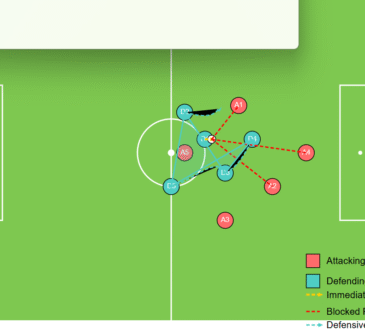Winning the Ball and Striking Back
“When my team is defending and they win the ball back, I need to make sure they transition into attacking as quickly as possible!”American coach
In the heat of a football match, one of the most electrifying moments is when a team wins the ball back while defending. The stadium holds its breath. In a flash, defense turns into opportunity! This moment of transition—when a team shifts from defense to attack—is known as offensive transition. And in African football, especially at grassroots and regional levels, this moment is often where the magic happens.
The African Game and the Power of Transitions
African football is renowned for its energy, flair, and raw pace. Across East and Central Africa—from Dar es Salaam to Addis Ababa—players are trained to be explosive in transition. The rhythm of the game is unpredictable, and that’s part of its beauty.
In many African teams, recovering possession isn’t just seen as a defensive victory—it’s an invitation to strike back hard and fast. The key to doing that effectively lies in two simple principles:
1. Find Openings
When possession changes, the opposition is often out of shape—spread out, disorganized, and vulnerable. This is the moment to exploit.
How do African teams find these openings?
- Scan the field immediately after recovery—who’s free? Where is the space?
- Use wide players—many East African sides rely on quick wingers who can receive long balls and isolate fullbacks.
- Play vertical passes—get the ball forward before the opposition regroups.
Winning teams across the CECAFA region are taught to look up, think forward, and break fast.
2. Create Openings
Sometimes the space isn’t obvious. That’s where creativity comes in.
Creating openings means:
- Using decoy runs to drag defenders out of position.
- Quick inter-passing between midfielders to unbalance the opponent.
- Switching the play to overload the opposite flank.
In African academies, especially in Kenya and Uganda, coaches emphasize football intelligence. It’s not just about speed—it’s about making the right choice at the right time.
Real Game, Real Lessons
Picture this: A Ugandan U20 side wins the ball deep in their half. The fullback immediately plays a diagonal to a fast winger on the right. That winger sprints forward, cuts in, drawing defenders. The striker pulls wide, the midfielder overlaps—and suddenly, they’re inside the box. From defense to goal in under 12 seconds.
This is the African game: bold, direct, but increasingly strategic.
Coach’s Corner
Winning the ball is just the beginning. What comes next defines your identity as a team. African football is evolving, blending natural athleticism with tactical sharpness. Transitions are no longer chaotic—they are rehearsed attacks.
The next time your team wins the ball back, ask yourself:
Are you ready to find the opening?
If not, can you create one?
Because in African football, the counter-attack isn’t just a tactic. It’s a statement!


